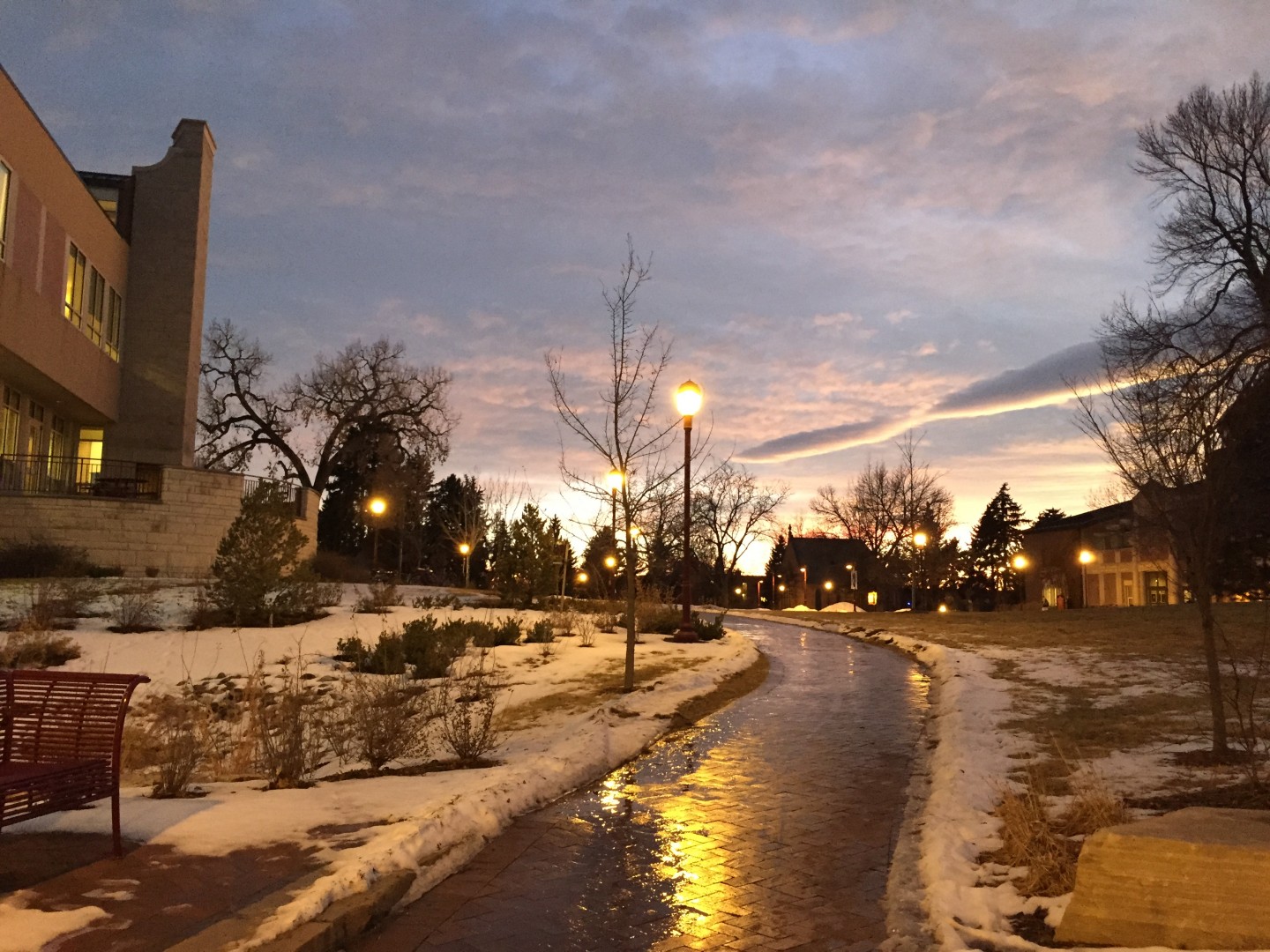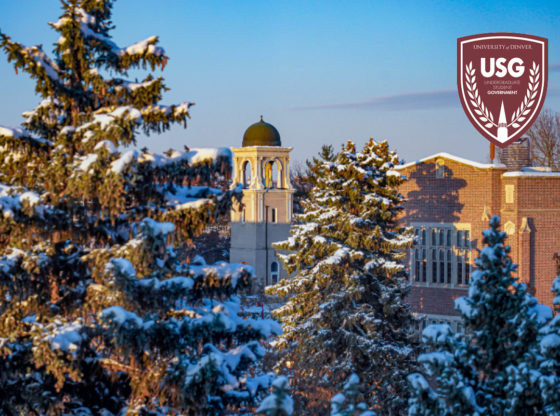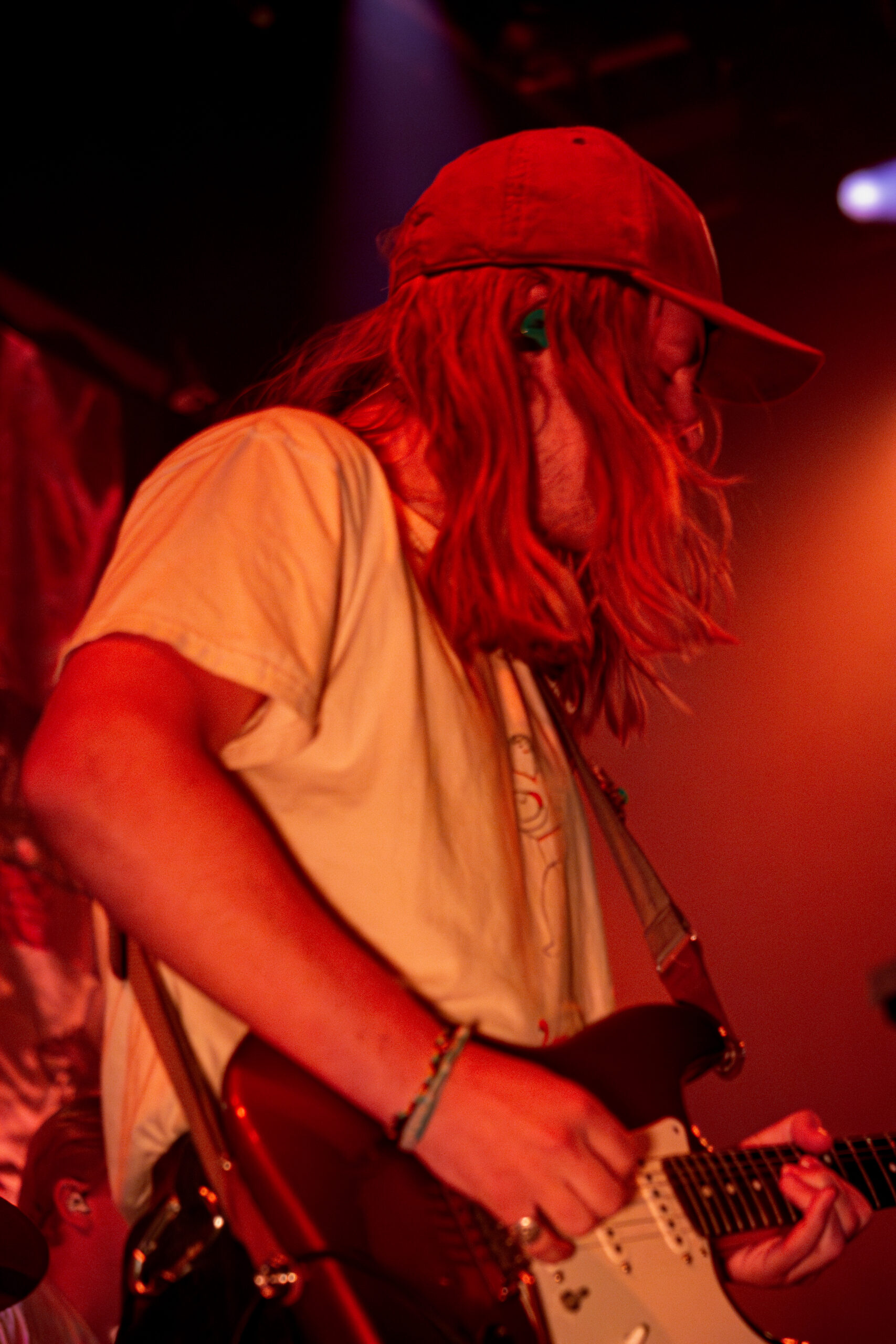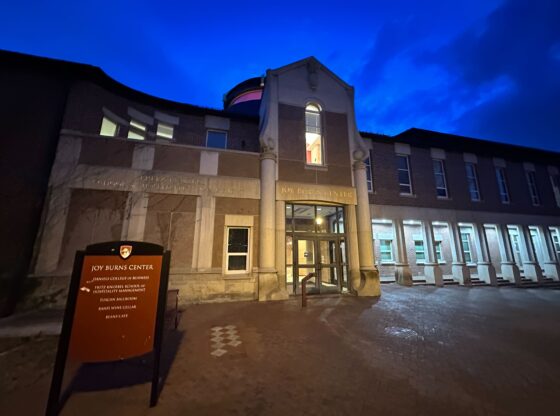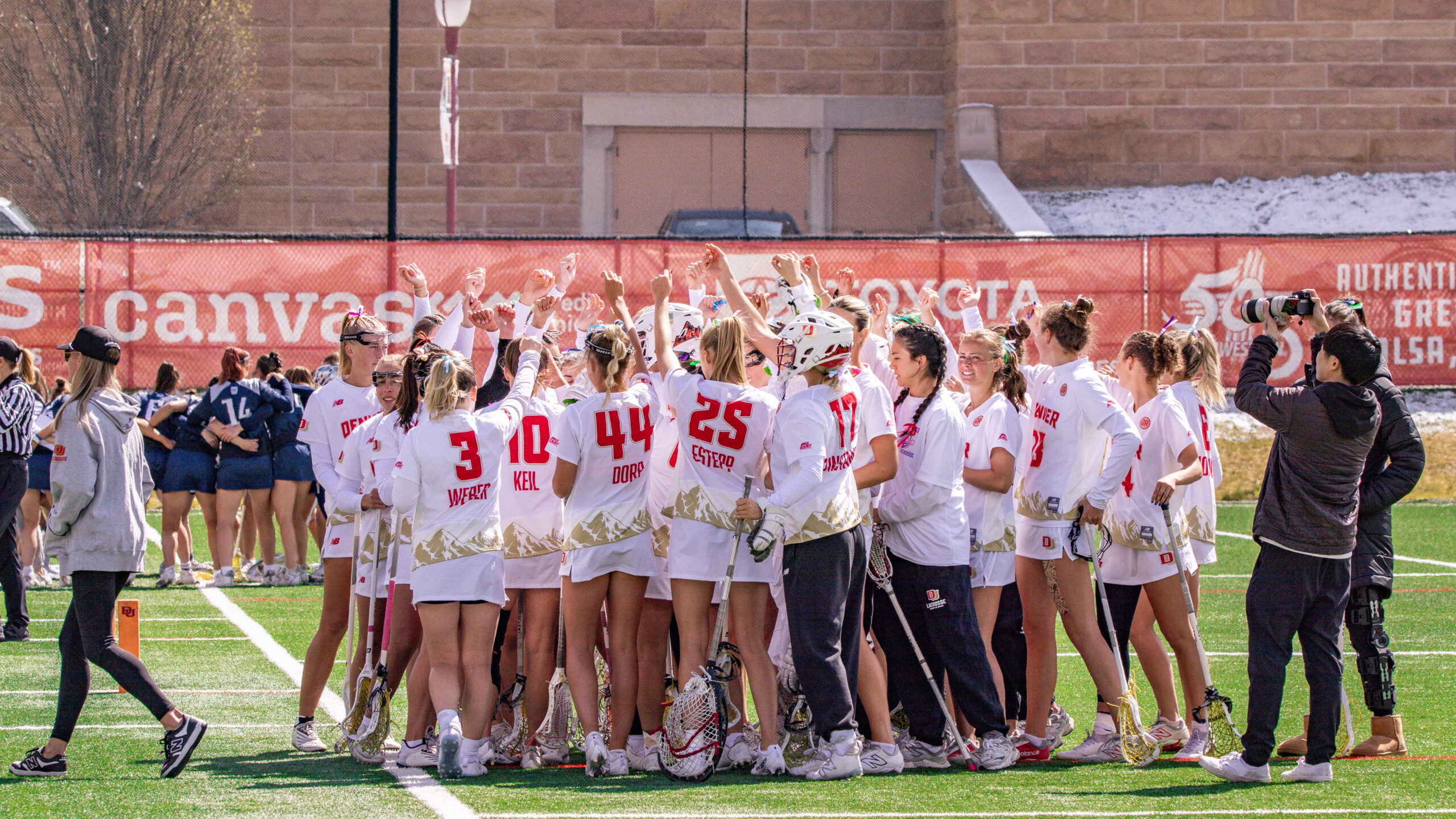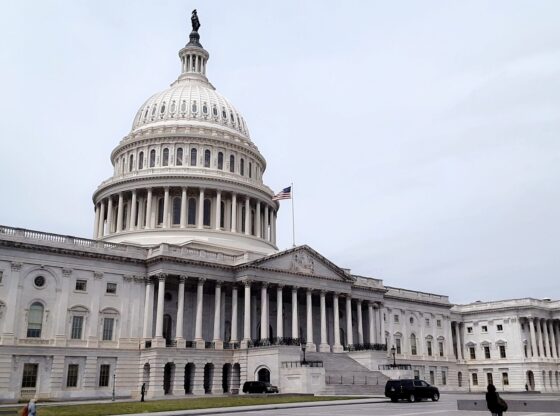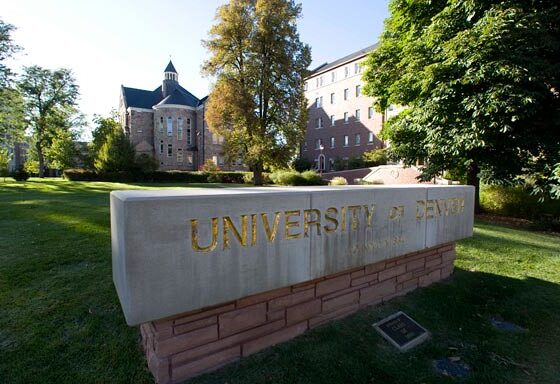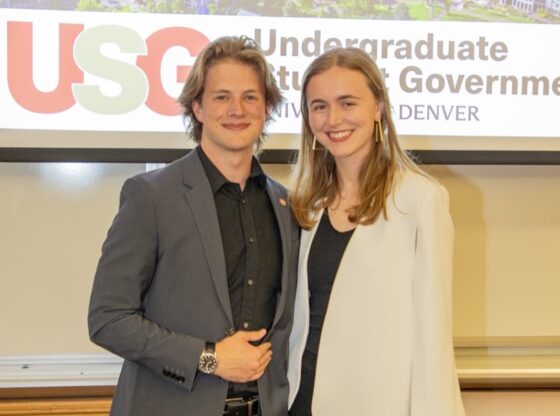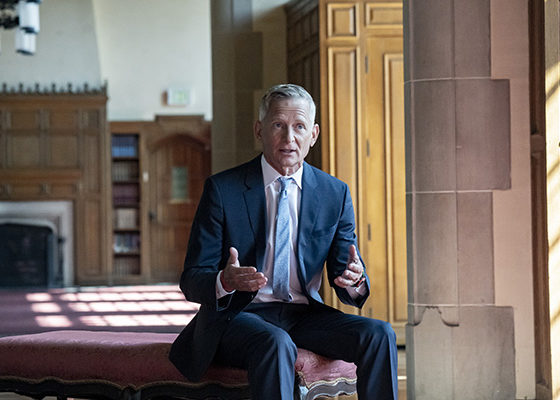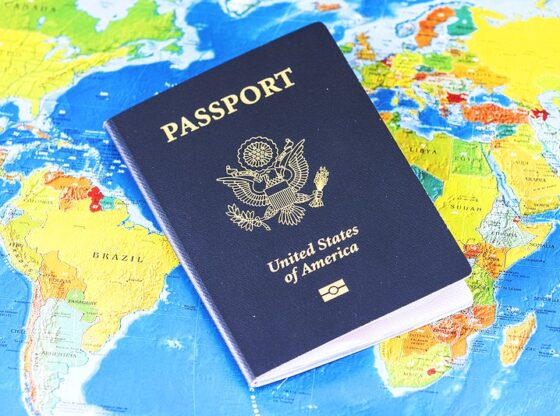Protests have punctuated campus life in recent years amid a rising wave of student activism. But, behind the rise in expression lies a growing divide: Campus Safety officials insist their measures are strictly for security, while activists argue that those tools of safety have become instruments of control.
It begs the question: what does safety really mean at the University of Denver, and what will it take for both sides to reach a common understanding?
Last year, as protest activity at DU surged, the presence of Campus Safety officers became a source of anxiety rather than comfort for Reina Ortiz and Evelyn Stovin, who both participated in the pro-Palestine encampment in May.
The encampment was Ortiz’s first interaction with Campus Safety, where she remembers being watched and, at times, recorded by officers using cell phones. Like other protestors, she felt unsettled and intimidated.
At one point, Ortiz mentioned that after noticing that Campus Safety had begun recording them, she left the encampment panicked. She then immediately received a location restriction. Stovin also suspected that their location restriction was tied to protest surveillance.
For Ortiz and Stovin, what Chief of Campus Safety Mike Bunker, describes as “monitoring,” crosses a line into intrusive surveillance, and neither realized that this surveillance didn’t end until this October, long after the end of the encampment.
Stovin, as president of the Queer Student Alliance, and other members of their executive board met with Chief Bunker for their annual family dinner on Oct. 8.
The family dinner is a gathering between individual student organizations like QSA, Chief Bunker and the USG Living, Safety and Wellness Committee Chair. Occasionally, there are also other Campus Safety officers present.
It’s part of a larger initiative by Bunker to build trust and strengthen ties with the DU community. The Clarion obtained a recording of that gathering.
Stovin confronted Bunker at the family dinner about how they’d felt their location restriction had been targeted.
“We all know you because we’ve all worked with you,” Bunker replied. Because of this, he explained, he was able to recognize and singled them out for a restriction.
He further explained that he “could go to [their] workplace” and tell Stovin, who works on-campus, what hair color they’d have that week.
“If I see him around, he’ll always make sure to say hi to me,” Stovin said, noting that they often see him at their workplace. “It’s just weird knowing that he reports that.”
On Oct. 7, Stovin attended a vigil for Palestine, organized in part by Ortiz. It was there that Ortiz had her first personal interaction with Campus Safety. As is required of all student events, the vigil was registered ahead of time with the National Guild of Lawyers on CrimsonConnect.
Shortly after, Bunker reached out to Ortiz and the other organizers, who chose not to respond. On the day of the vigil, he reached out again. The organizers were trying to find a time to meet Bunker when he called Ortiz’s personal cell phone.
“I’m not on a first-name basis with Mike Bunker. I don’t speak to him. I don’t know him,” Oritz said. She doesn’t know how he got her phone number.
Bunker clarified to the Clarion that phone numbers are “part of a student record,” which he has access to. Campus Safety often calls students for other purposes, like finding the owners of lost IDs, credit cards or car keys.
Ortiz said the organizers told Bunker they didn’t want or need Campus Safety at the event.
“In any other space in which students are in community, especially in mourning, we would expect some respect,” Ortiz said.
But according to Ortiz, Bunker made it clear that, for their safety, Campus Safety would be there whether they wanted them or not.
“That was not their choice,” Bunker confirmed. “What happens if we let that event go? If we don’t have any security and there’s a violent event, whose responsibility is it?”
Still, Ortiz argues that Campus Safety’s presence at events like the encampment or the vigil has contributed to a “suffocating atmosphere here at DU for student activists and advocates.”
“It feels like any step that we take that makes admin uncomfortable or that could look like a gathering of people whose politics they don’t agree with is being monitored,” Ortiz added.
Bunker, however, maintains that the level of monitoring Ortiz and Stovin have experienced isn’t exclusive to them.
“We’re not surveilling students… we’re monitoring events,” Bunker said. “I have 860 cameras on campus. We don’t follow one particular person. It’s impossible.”
He explains that when an event is flagged in some way — often through Student Affairs or social media chatter — Campus Safety establishes a command post, where they monitor the event through both cameras and officers on the ground.
“[The monitoring] ends when the event’s over,” Bunker said.
Still, the disconnect seems to stem from the fundamentally different ways each side perceives Campus Safety and its actions.
“It makes sense for them to want to ensure the physical safety of students, staff, and faculty, and they should be able to do that proportionately to the threat on the ground,” Stovin said.
However, Stovin believes that the monitoring they’ve encountered this school year, despite the fact that they have neither organized or participated in anything like the encampment thus far, is where monitoring becomes something else.
“At that point, it’s not even a semblance of keeping campus safe. [Campus Safety is] actively viewing these students as a threat, because [they are] viewing this protest and their actions as a threat to the campus. I have no problem being identified if I am an active protest leader, but it does cross the line when it’s like I’m still being monitored even after the protest is over, because I’m still viewed as a threat,” Stovin said.
Bunker argued communicating about his interactions with students, including activists, with administration members is intended to make them feel more supported and safer.
“I don’t think it’s ‘reporting’,” Bunker said. “It’s providing feedback for how students are feeling… I can take those meetings and go follow up with my boss and say… how can we work on this to get better?… I’m not monitoring them. I’m not trying to get anyone in trouble, but I am trying to solve problems, and if you’re a student, and you tell me you don’t feel safe physically and psychologically, what are my next steps? We have to have you feel safe… safety is my number one priority,” he added.
But for Stovin and Ortiz, the measures meant to support and protect students only make them feel more afraid.
“I think what [the administration] and Campus Safety fail to realize is that the lack of safety that students oftentimes feel comes from them,” Ortiz said. “I want to know that if I’m a student activist, and even outside of my role as an activist, if I felt like I was in danger, I could call Campus Safety without getting my name written down on some list or my face remembered by somebody.”
Bunker acknowledged that there’s tension between student activists and Campus Safety but believes that fear of his department, encouraged by “false narratives,” undermines his efforts to build trust with the community.
It becomes apparent that both groups need something the other can’t give them. Bunker views his department’s role as ensuring collective safety, but student activists contend that their safety should be theirs to define, construct and risk, rather than be imposed by an institution they view as inherently detached from it.
The catalyst for that conflict was last year’s encampment. Following their treatment by Campus Safety, Stovin and Ortiz expected counter-protestors — some of whom were, at one point, drinking and shouting slurs — to face similar repercussions, but Campus Safety didn’t intervene.
At the family dinner with QSA, Bunker explained that he was advised by the Denver Police Department that getting too involved would escalate the situation to a point where they couldn’t contain it.
“They said it’s too big… lock everything down,” Bunker recalled. “We could not go in safely.”
Yet for protestors, many of whom never received that explanation, the disparity was perceived as hypocrisy, and it made them feel abandoned and vulnerable.
“They kept talking about how the encampment was disruptive to school operations,” Ortiz said. “But it wasn’t like [the counter-protestors] got location restrictions. It wasn’t like they were being followed or surveilled by Campus Safety… it wasn’t like they were being villainized, antagonized, penalized for that type of behavior.”
Both sides ultimately acknowledge that these disputes are symptoms of a broader issue.
“[Campus Safety officers] are following orders, to some extent,” Ortiz pointed out. “They’re doing their jobs.”
Freedom of expression at DU
Stovin also expressed concern about the administration’s involvement in their surveillance. All of this comes as leaders at DU ramp up discussions around freedom of expression on campus.
At the 2024 convocation, both Provost Mary Clark and Chancellor Jeremy Haefner mentioned freedom of expression. It was the topic of several conversations Clark held around campus fall quarter.
Haefner took part in a discussion on democracy and truth with 9News’s Kyle Clark last October. This year’s first-year orientation included debates over the new protest policy, which prohibits encampments.
“I think that Haefner, like university chancellors and presidents all over the country, is very concerned with how they allow freedom of expression to take place on campus,” Ortiz said.
More than 3,100 students have been arrested nationwide during campus protests and a recent study of nearly four dozen institutions found that almost all of them have updated their campus protest policies to restrict or severely limit encampments and increase consequences for protestors.
DU’s updated protest policy does both, and to Ortiz, it’s only another way of restricting and penalizing student activism, contrary to what both Haefner and Clark have been promoting.
“What is particularly maddening about what they’re doing is that they support our freedom of expression publicly, but we’ve never been more restricted as student activists,” Ortiz said.
Ortiz clarified that she doesn’t have a problem with the fact that students face consequences for protesting.
“Why would we expect there not to be consequences when we’re going out of our way to break the honor code?” she asked.
In her opinion, the issue is that the new policy means that protestors face much more severe consequences for disrupting campus activities or breaking other rules compared to before.
Not only are these consequences disproportionate, she argues, they do not consider the context in which the rules are broken, leaving student protestors vulnerable to abuses of power.
“In the new protest policy, they stipulate dozens upon dozens of ways in which DU can, at any point, interfere with or stop a protest, but there isn’t a section anywhere that grants students any new protections,” Ortiz said.
The new policy was enacted to “help provide a safe, productive, and supportive educational environment that advances our mission and values,” according to an email sent by Haefner to DU students in August.
Both Stovin and Ortiz, however, object to this representation of the university’s motives.
“A lot of [activists] felt like they couldn’t interact with the encampment because they… would be identified, and instilling that level of fear with students who are trying to engage in protest is unsavory coming from a school that [is] championing, supposedly, freedom of expression… [Their approach is] dishonest… and that’s where I feel unsafe,” Ortiz said.
Stovin considers these interactions between Campus Safety and students representative of a larger debate over who gets to be seen, heard and trusted.
“This is not just a DU thing. This is a form of surveillance of who belongs and who doesn’t, who is part of us, and who is part of the other, and so I really want students to be able to interrogate this so that they can recognize it in other forms outside of DU, as well as within it,” Stovin said.
Bunker maintains that Campus Safety is constantly working to improve its operations and its relationship with the community.
“I’m always threading the needle… I’m never going to be transparent, but I will be open. Transparent means I’m going to show you everything all the time… we can’t tell everybody everything… but I’m more than willing to be as open as I can,” Bunker said.
Student activists’ message comes loud and clear: safety should not come at the cost of autonomy. But rebuilding trust will require a shift from both sides, with neither quite willing to disturb the balance already set.


